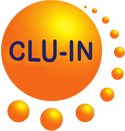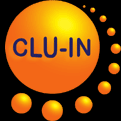Search Result
REMEDIATING PETROLEUM-CONTAMINATED GROUNDWATER WITH AN AERATED, DIRECT-PUSH, OXIDANT DELIVERY SYSTEM
Christenson, M., J. Reece, A. Kambhu, Y. Li, C. Harris, and S. Comfort.
26th International Petroleum Environmental Conference, 7-9 October, San Antonio, TX, 42 slides, 2019
Filed Under: Cleanup News
Filed Under: Cleanup News
An aerated, slow-release oxidant delivery system (oxidant candle) was installed by direct-push equipment to remediate TCE or BTEX at three sites in Nebraska. The system continuously bubbles air beneath oxidant candles in situ to facilitate oxidant spreading as the candle slowly dissolves. The aeration rate controls the outward flow of oxidant from the outer screen in all directions and the radius of influence around each drive point is largely a function of the outward velocity of the oxidant exiting the screen and the advection rate opposing the upgradient and lateral spreading of the oxidant. Field results from the three sites show downgradient contaminant concentrations typically decrease 50-99% within 6-9 months after installation. https://cese.utulsa.edu/wp-content/uploads/2019/10/IPEC-2019-S.-Comfort-Comfort_AirLift_-2019.pdf More information on the Cozad Landfill using Oxidant Candles: https://digitalcommons.unl.edu/cgi/viewcontent.cgi?article=1332&context=natrespapers
26th International Petroleum Environmental Conference, 7-9 October, San Antonio, TX, 42 slides, 2019
Filed Under: Cleanup News
Filed Under: Cleanup News
An aerated, slow-release oxidant delivery system (oxidant candle) was installed by direct-push equipment to remediate TCE or BTEX at three sites in Nebraska. The system continuously bubbles air beneath oxidant candles in situ to facilitate oxidant spreading as the candle slowly dissolves. The aeration rate controls the outward flow of oxidant from the outer screen in all directions and the radius of influence around each drive point is largely a function of the outward velocity of the oxidant exiting the screen and the advection rate opposing the upgradient and lateral spreading of the oxidant. Field results from the three sites show downgradient contaminant concentrations typically decrease 50-99% within 6-9 months after installation. https://cese.utulsa.edu/wp-content/uploads/2019/10/IPEC-2019-S.-Comfort-
The Technology Innovation News Survey welcomes your comments and
suggestions, as well as information about errors for correction. Please
contact Michael Adam of the U.S. EPA Office of Superfund and Emergency Management at adam.michael@epa.gov or (703) 603-9915
with any comments, suggestions, or corrections.
Mention of non-EPA documents, presentations, or papers does not constitute a U.S. EPA endorsement of their contents, only an acknowledgment that they exist and may be relevant to the Technology Innovation News Survey audience.




